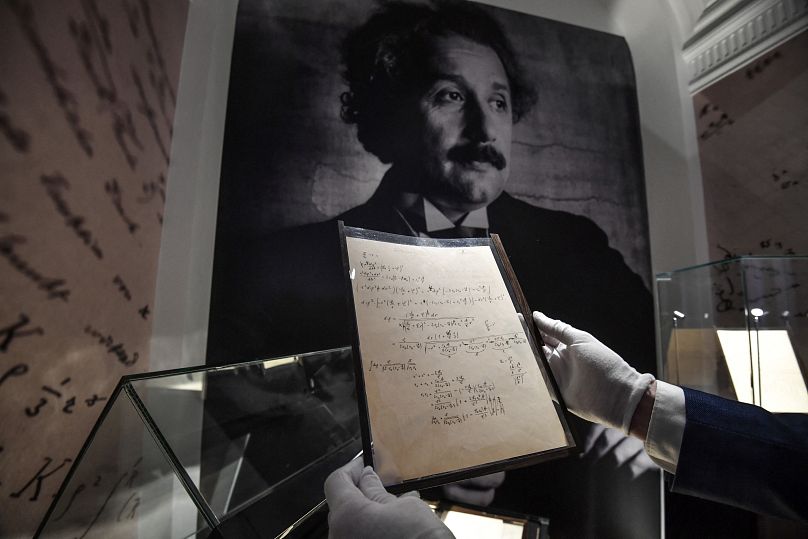A manuscript in which Albert Einstein prepared his theory of general relativity has sold at auction in Paris for a record €11.6 million.
A manuscript in which Albert Einstein prepared his theory of general relativity has sold at auction in Paris for a record €11.6 million.
Previous records for an Einstein manuscript were $2.8 million (€2.4 million) in 2018 in New York for a letter about God, and $1.56 million (€1.39 million) in 2017 in Jerusalem for a letter about the secret of happiness.
The document sold on Tuesday, which had an estimate at between two and three million euros, was sold for €11.6 million with fees (€10.2 million without fees).
It is a 54-page autograph manuscript written in 1913 and 1914 in Zurich, Switzerland, by the German-born physicist and his collaborator and confidant, Michele Besso.
Unlike the two previous record-breakers, it is a scientific working document, which makes it rare.
'An extraordinary record of Einstein's work'
"Einstein's scientific autographs from this period, and more generally from before 1919, are extremely rare," said Christie's, where the auction was held.
According to Christie's, it is thanks to Besso that "the manuscript has, almost miraculously, come down to us: Einstein would probably not have bothered to keep what might have appeared to him to be a working document.”
After his theory of special relativity, which led to the demonstration of the famous formula E=mc² in 1905, Einstein began to work on a theory of general relativity.
This theory of gravitation, finally published in November 1915, revolutionised our understanding of the universe. Einstein died in 1955 at the age of 76 and became a symbol of scientific genius as well as a pop figure, with the famous 1951 photo of him sticking his tongue out.
In early 1913, he and Besso "tackled one of the problems that the scientific community had been struggling with for decades: the anomaly in the orbit of the planet Mercury," Christie's recalls. The two scientists solved this enigma.
It is not in the calculations in the manuscript, which contain "a number of unnoticed errors". When Einstein spotted them, he didn't bother with the manuscript, which Besso took away.
"As one of only two surviving working manuscripts documenting the genesis of the theory of general relativity, it is an extraordinary record of Einstein's work and provides a fascinating insight into the mind of the 20th century's greatest scientist," Christie's said.
The other known document from this crucial period in the physicist's research, the so-called "Zurich notebook" (late 1912, early 1913), is in fact preserved in the Einstein archive at the Hebrew University in Jerusalem.












